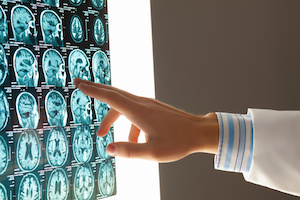It is well established that expert witnesses who offer their opinions to juries must build testimony from a solid foundation of reliable methodology that supports their conclusions. The Daubert standard of evaluating the reliability of testimony applies to any expert, including, as a recent federal decision highlights, expert witnesses whose testimony is focused strictly on determining appropriate damage awards. In Sloan Valve Company v Zurn Industries, a federal judge in the Northern District of Illinois showed that damages expert witnesses must base their testimony on credible methods of collecting and investigating data – holding damage testimony to a high standard that all experts must satisfy.
Case Background
Sloan Valve filed a lawsuit against Zurn Industries for an alleged patent infringement on its toilet plumbing fixtures. According to Sloan, Zurn copied flush toilet designs that allows users to alter the volume of flush water by changing the direction of the handle. During expert witness discovery, Sloan presented the testimony of Richard Bero to identify the damages Zurn’s patent infringement cost Sloan in terms of lost business.
As part of his analysis, Mr. Bero analyzed the market value of the valve assembly to calculate Zurn’s potential profits from Sloan’s lost sales. After hearing the damage analysis, Zurn moved to exclude the expert testimony for a number of reasons stemming from Bero’s failure to demonstrate that he used reasonable and reliable calculations during the course of his investigation. Applying a Daubert review of Bero’s methodology, the judge agreed and Sloan’s damages expert was precluded from testifying at trial.
Damages Expert Witness Testimony is Dismissed
The Court in Sloan v Zurn determined that the plaintiff’s damages expert witness presented a flawed testimony for a number of reasons. When analyzing the damages caused by Zurn’s alleged patent infringement, Mr. Bero:
- Failed to narrowly tailor his analysis to the specific parts at issue in the patent dispute
- Improperly included lost profits from related products sold by Sloan
- Predicted, with no reliable method to his analysis, that Sloan would have been able to sell the parts at a higher price than Zurn had the patent infringement not occurred
- Conducted his investigation without using any accepted method of royalty analysis, instead choosing to formulate a basic calculation that contrived an unsupported damages figure based on the biased testimony of Sloan executives and broad assumptions of the effect Zurn’s infringement had on Sloan’s sales
Mr. Bero’s testimony predicting Sloan’s damages from lost business lacked reliable and professionally verified methods for identifying the cost of patent infringement. The Court was unconvinced that Mr. Bero’s economic prediction was sufficiently supported by proven royalty analysis, and as such rejected his financial expert witness testimony.
Sloan Decision Demonstrates Importance of Daubert Standards
The Sloan decision serves as a reminder that the methodologies of data collection and investigation used by damages expert witnesses must be just as sound as that used by experts who help juries determine the outcome of a lawsuit. As with any expert witness, financial professionals hired to testify to damages have available an established set of methods that a court will look to when verifying the reliability of testimony, and a party hiring a financial expert must be sure the expert is incorporating them. The Daubert standards of expert witness testimony apply to all professionals called upon to inform judges and juries – including those who focus solely on calculating damages.








